Eucalypts - juvenile leaves
Juvenile leaves of eucalypts are usually quite different to the mature leaves. The juvenile leaves can be found on young plant (to about a metre high), on coppice growth, or new shoots growing on the trunk. The latter is common after a fire, or if the tree is stressed.
Juvenile leaves in opposite stalkless pairs. Juvenile leaves broad, longer than wide.
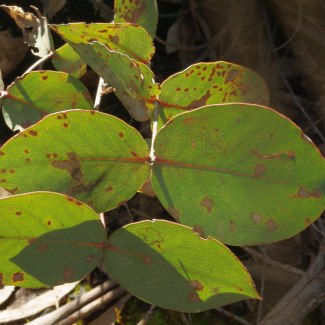
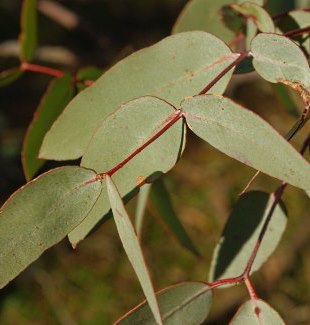
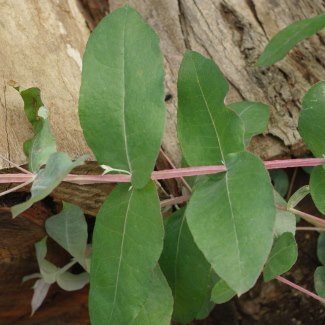
Left: Broad-leaved Peppermint (E. dives). The juvenile leaves often taper to a point (like those of Yellow Gum). Taradale. Centre: Yellow Gum (E. leucoxylon). St Arnaud. Right: Blue Gum (E. globulus) Leaves scarcely taper. Stems square in cross section. Anglesea.
Juvenile leaves in opposite stalkless pairs. Juvenile leaves round,as wide as long.
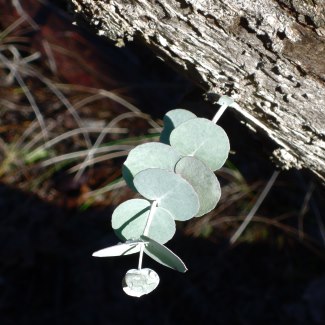
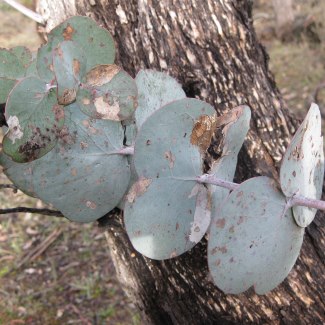
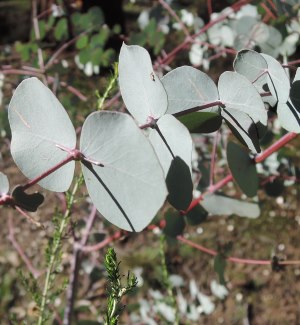
Left: Long-leaved Box (E. goniocalyx). Tree is rough barked. Castlemaine. Centre: Mealy Bundy (E. nortonii). Buds,fruit,j leaves white-coated. Right:Candlebark (E. rubida) White barked gum.Pollards Road.
Juvenile leaves in opposite stalkless pairs. Juvenile leaves narrow.
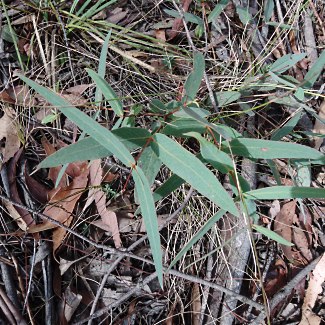
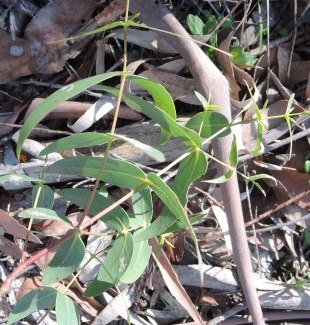
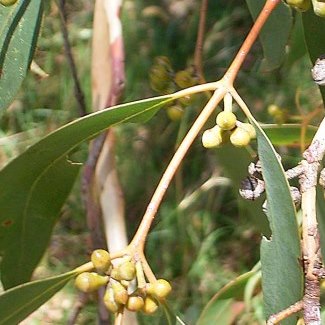
Left: Narrow-leaf Peppermint. The leaves have numerous oil dots, and are very aromatic if crushed. Creswick. Centre: Manna Gum (E. viminalis). Right: Silver-leaved Peppermint (E. cephalocarpa). The leaves can be still opposite in mature trees. Metcalfe.
Juvenile leaves alternate, more or less round.
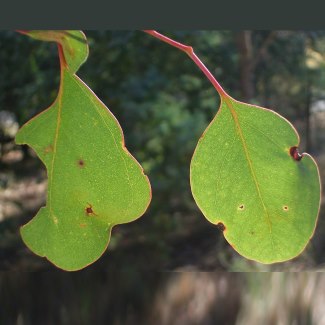
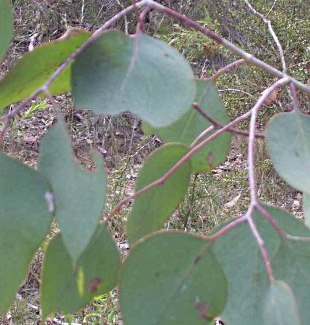
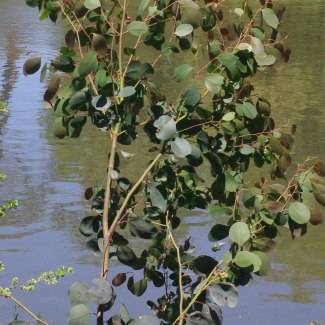
L: Red Box (E. polyanthemos The leaves are often bluish in colour. C: White Box (E. albens) has large rounded juvenile leaves. They are bluish in color and about twice as big as those of Red Box. Castlemaine. R: Swamp Gum. (E. ovata) has green juvenile leaves. Wendouree.
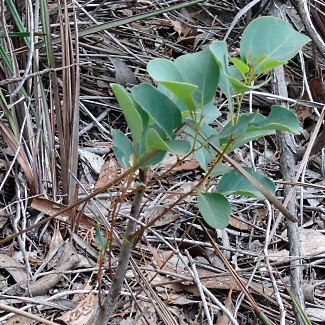
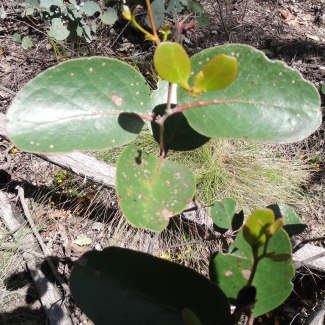
Left: Sugar Gum (*E. cladocalyx). The lower surfaces of the leaves are paler than the upper surfaces. Centre: Small-leaved Brown Stringybark (E. aurifodina) The juvenile leaves are thick, leathery, and green.
Juvenile leaves alternate, longer than wide.
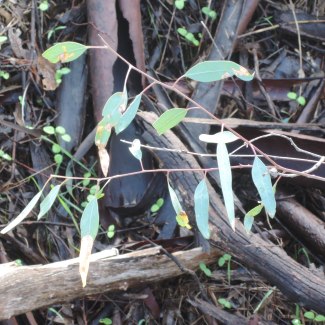
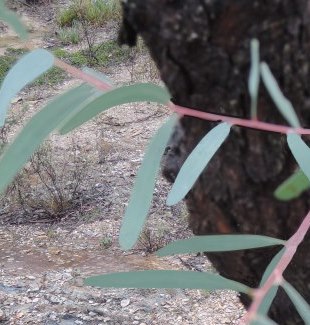
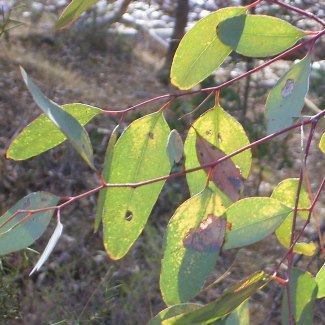
Left: River Red Gum (E. camaldulensis). Muckleford Forest (near the Quince trees). Centre: Scent Bark (E. conferta). Green Gully Road. Right: Yellow Box (E. melliodora). Maldon.
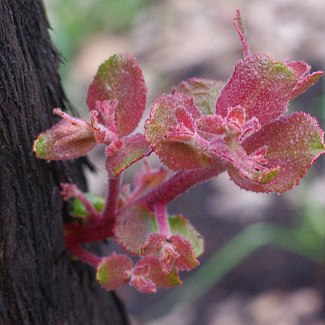
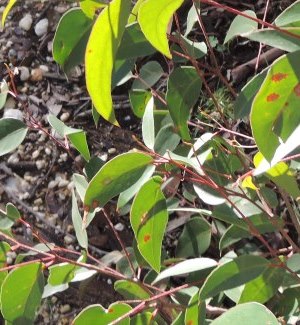
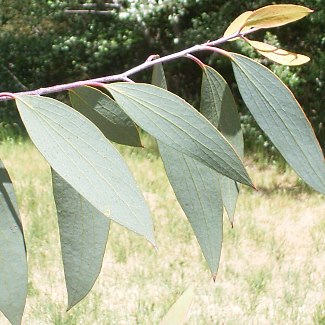
Left: Red Stringybark (E. macrorhyncha). Muckleford (after a fire). Centre: Messmate (E. obliqua). The juvenile leaves are a glossy green. Right: Snow Gum (E. pauciflora). The veins are almost parallel to the central vein. Castlemaine.
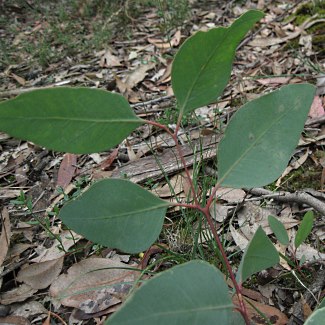
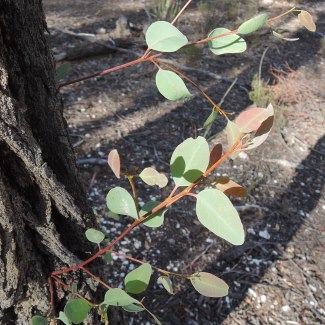 Left: Grey Box (E. microcarpa). The juvenile leaves are sometimes almost diamond-shaped. Porcupine Ridge.
Centre: Red Ironbark. Muckleford.
Left: Grey Box (E. microcarpa). The juvenile leaves are sometimes almost diamond-shaped. Porcupine Ridge.
Centre: Red Ironbark. Muckleford.